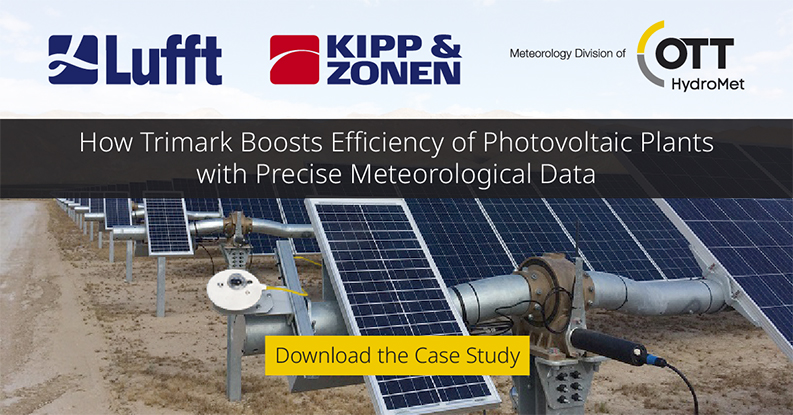We all know that fluctuations in the output of a photovoltaics plant are inevitable and can occur for lots of reasons. Due to these fluctuations plant operators run the risk of losing time and money. More seriously, underperformance of power plants creates exposure to penalties.
In order to be able to compare the estimated power output to the actual plant performance it is essential that you can make precise on-site measurements of all meteorological parameters. This means you not only need the tools to measure the current solar irradiance, but you should also be able to measure the actual temperature, the humidity, wind speed and wind direction.
Know your PV plant better – Ask two important questions!
In this case study Trimark Associates, Inc., a leading provider of metering, SCADA, and energy storage technology solutions, shares with us how they utilize the data from their on-site meteorological measurements to allow for remote operation of PV plants. Data Scientist Matthew Kesselring explains that basically only two questions need to be answered to know the performance of a PV plant. These key questions are:
How much energy is a site producing?
and
How much should it be producing?
The energy and meteorological data Trimark is sharing are the data of the Riverside plant in Southern California. The data of this plant clearly illustrate the value of performing on-site measurements. The collected two sets of data in separate weeks clearly showed that the energy produced differs from the estimated energy output. This difference can be clarified with the data of the on-site measurement of microclimate parameters.
The analysis of these data helps the plant operator to decide whether there is a technical problem, meaning they should call in technical support, whether cleaning of the panels is in order, or whether they should just wait for the sun to start shining again.
Download our case study to find out how reliable real-time data helps plant operators decide if an unexpected drop in power output requires taking immediate action to minimize production losses or if this output drop is only temporary.
Do you have questions or want to understand more? Get in touch with our team of experts and learn how you can improve plant efficiency with accurate meteorological measurements.
This article has been originally published in 2020 and was updated in October 2022.




